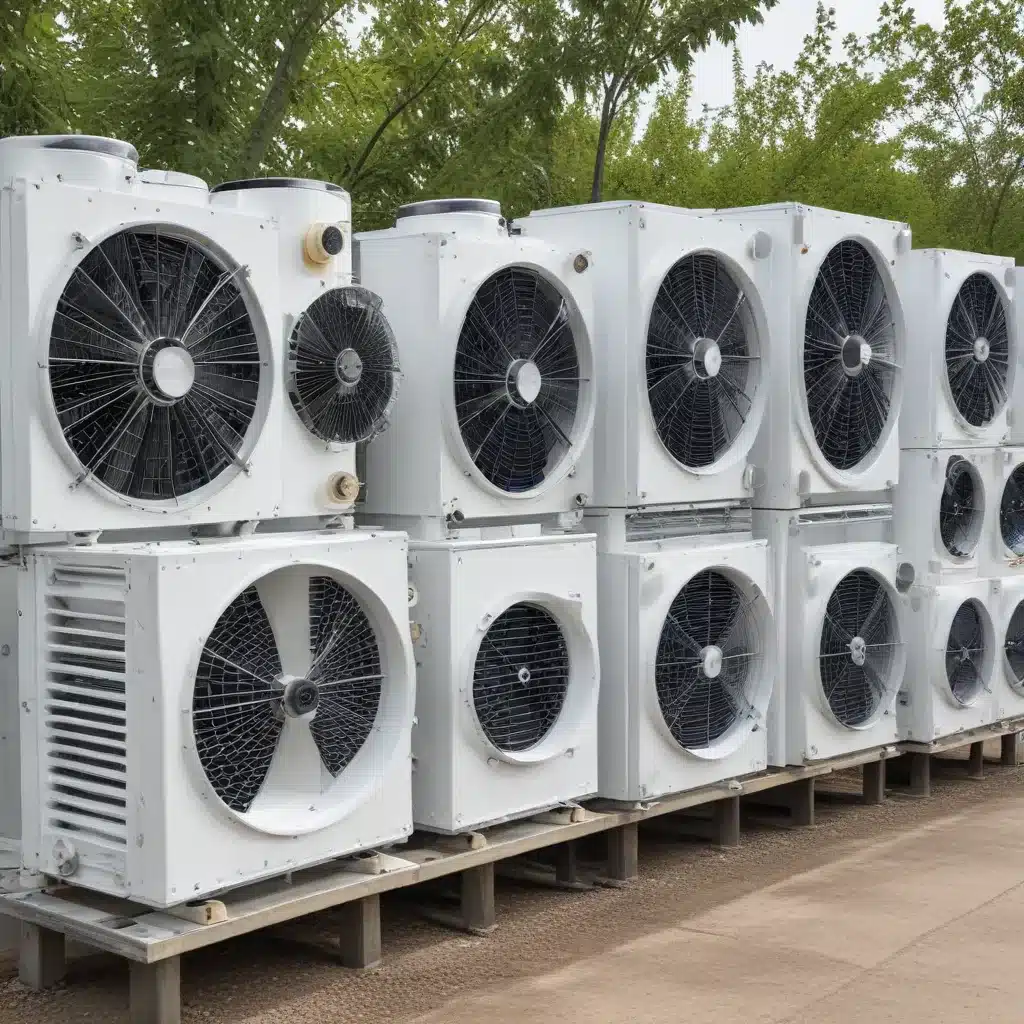
In the ever-evolving landscape of industrial efficiency and sustainability, the role of air-cooled heat exchanger (ACHE) systems has become increasingly pivotal. As industries strive to reduce their environmental impact while maintaining optimal operational performance, these eco-friendly cooling solutions have emerged as a game-changer.
The Mechanics of Air-Cooled Heat Exchangers
At the heart of an ACHE system lies the fundamental principle of heat transfer. These systems leverage the temperature differential between the hot fluid, typically generated by industrial processes, and the cooler ambient air to dissipate excess heat. The key components of an ACHE system include:
- Tube Bank: The tube bank, or bundle, serves as the primary heat transfer surface, where the hot fluid flows through the tubes, exchanging heat with the surrounding air.
- Fins: Attached to the tube bank, the fins enhance the heat transfer rate by increasing the overall surface area exposed to the air.
- Fans: Strategically positioned fans circulate the ambient air across the tube bank, facilitating the heat exchange process.
The efficient design of ACHE systems ensures that the hot fluid is cooled effectively, allowing industries to maintain optimal equipment performance and prevent costly downtime.
Exploring the Environmental Advantages of ACHE Systems
Air-cooled heat exchanger systems offer a multitude of environmental benefits that make them an attractive choice for industries seeking eco-friendly cooling solutions:
Energy Efficiency
ACHE systems are renowned for their energy-efficient operation. By leveraging the natural temperature differential between the hot fluid and the ambient air, they can effectively dissipate heat without relying on energy-intensive mechanical refrigeration systems. This translates to significant reductions in energy consumption and lower carbon footprints for industrial facilities.
Reduced Water Consumption
Unlike water-cooled systems that require a continuous supply of water for cooling, ACHE systems operate solely on air, eliminating the need for large volumes of water. This conservation of a precious natural resource is particularly crucial in regions facing water scarcity or drought conditions.
Minimal Environmental Impact
ACHE systems do not discharge any harmful chemicals or waste products into the environment. They operate in a closed-loop system, ensuring that the heat transfer process does not introduce any contaminants or disrupt the local ecosystem. This aligns with the growing emphasis on sustainable industrial practices and environmental stewardship.
Adaptability to Renewable Energy Integration
The modular design of ACHE systems allows for seamless integration with renewable energy sources, such as solar or wind power. This synergy enables industries to further enhance their eco-friendly credentials by reducing their reliance on fossil fuels and embracing clean energy alternatives.
Reduced Greenhouse Gas Emissions
By minimizing energy consumption and eliminating the need for water-intensive cooling methods, ACHE systems significantly contribute to the reduction of greenhouse gas emissions. This aligns with global initiatives to mitigate climate change and promote sustainable industrial practices.
Maintenance and Optimization for Optimal Performance
To ensure the long-term efficiency and reliability of ACHE systems, it is crucial to follow best practices for maintenance and optimization:
- Regular Cleaning and Inspection: Regularly cleaning the tube bank and fins to remove any accumulated dirt, debris, or biological growth can optimize heat transfer and maintain system performance.
- Fin Maintenance: Monitoring the condition of the fins and addressing any damage or deformation through straightening or replacement can enhance airflow and heat dissipation.
- Fan Maintenance: Maintaining the proper operation and alignment of the fans, as well as addressing any imbalances or vibrations, can ensure efficient air circulation.
- Monitoring and Optimization: Continuously monitoring the system’s performance, analyzing data, and implementing adjustments can optimize energy efficiency and minimize environmental impact.
By adhering to these maintenance protocols, industries can maximize the benefits of their ACHE systems and ensure long-term environmental sustainability.
Emerging Trends and Future Outlook
The field of air-cooled heat exchanger technology is constantly evolving, driven by the ever-increasing demand for efficient and eco-friendly cooling solutions. Some emerging trends and future advancements in the industry include:
- Hybrid Cooling Systems: The integration of ACHE systems with other cooling technologies, such as evaporative cooling or thermal energy storage, can further enhance energy efficiency and environmental performance.
- Advancements in Materials and Design: Ongoing research and development in materials science and heat transfer engineering are yielding more robust, corrosion-resistant, and high-performance ACHE systems.
- Digitalization and Automation: The integration of smart sensors, predictive maintenance algorithms, and automated control systems can optimize the performance and energy efficiency of ACHE systems, allowing for real-time monitoring and optimization.
- Renewable Energy Integration: The seamless integration of ACHE systems with renewable energy sources, such as solar or wind power, is a growing trend that aligns with the industry’s sustainability goals.
As industries continue to prioritize environmental responsibility and operational efficiency, the adoption of air-cooled heat exchanger systems will undoubtedly play a pivotal role in shaping a more sustainable future.
Conclusion
In the pursuit of eco-friendly cooling solutions, air-cooled heat exchanger systems have emerged as a game-changing technology. By leveraging the natural temperature differential between hot industrial processes and the ambient air, ACHE systems offer a host of environmental benefits, including enhanced energy efficiency, reduced water consumption, and minimal impact on the surrounding ecosystem.
As industries strive to reduce their carbon footprint and embrace sustainable practices, the adoption of ACHE systems becomes a crucial step towards a greener future. By understanding the mechanics, maintenance requirements, and emerging trends in this field, decision-makers can make informed choices that not only benefit their operations but also contribute to the preservation of our planet.
Embrace the power of air-cooled heat exchanger systems and join the movement towards a more sustainable industrial landscape. Unlock the environmental advantages and embark on a journey towards a cleaner, more energy-efficient future.

